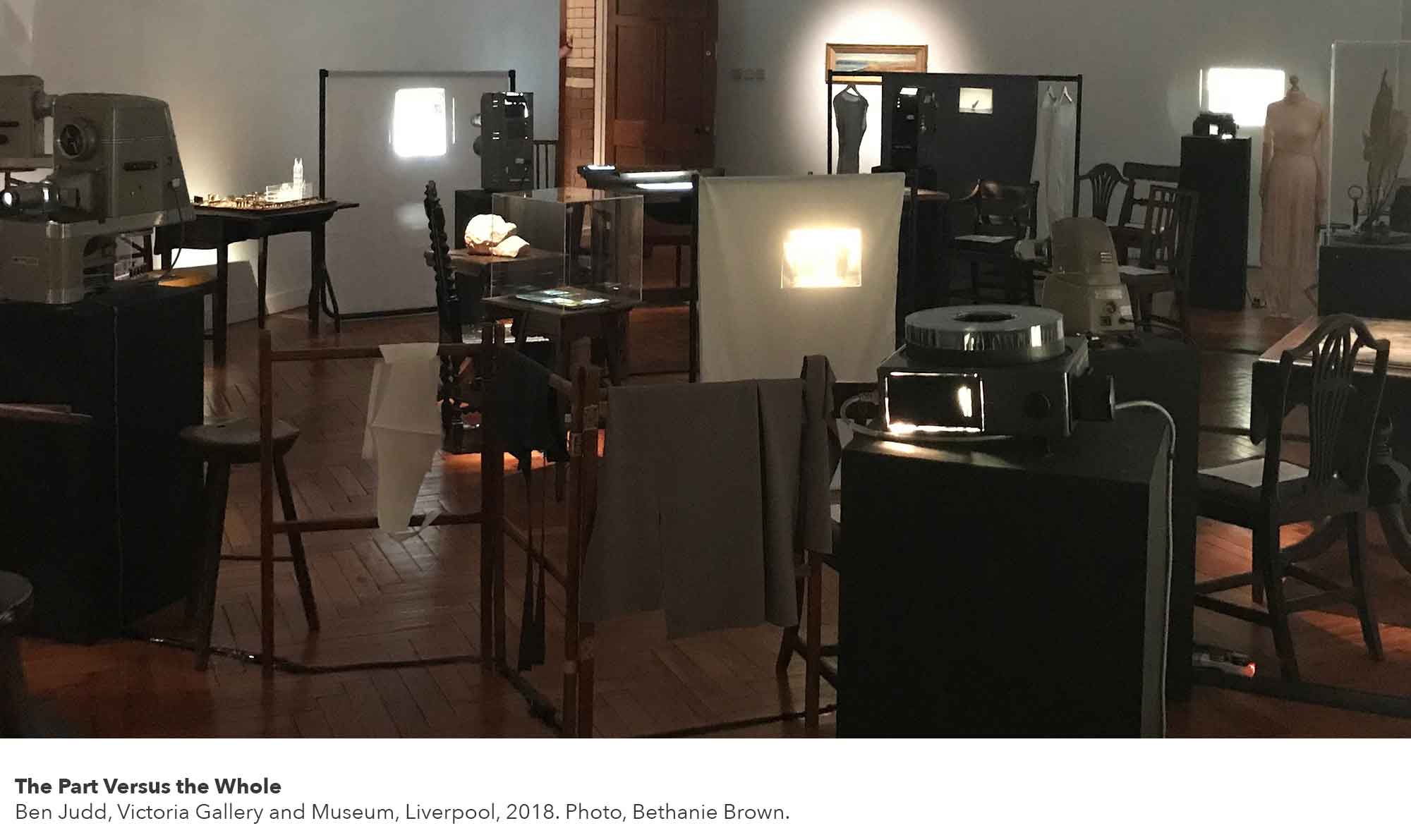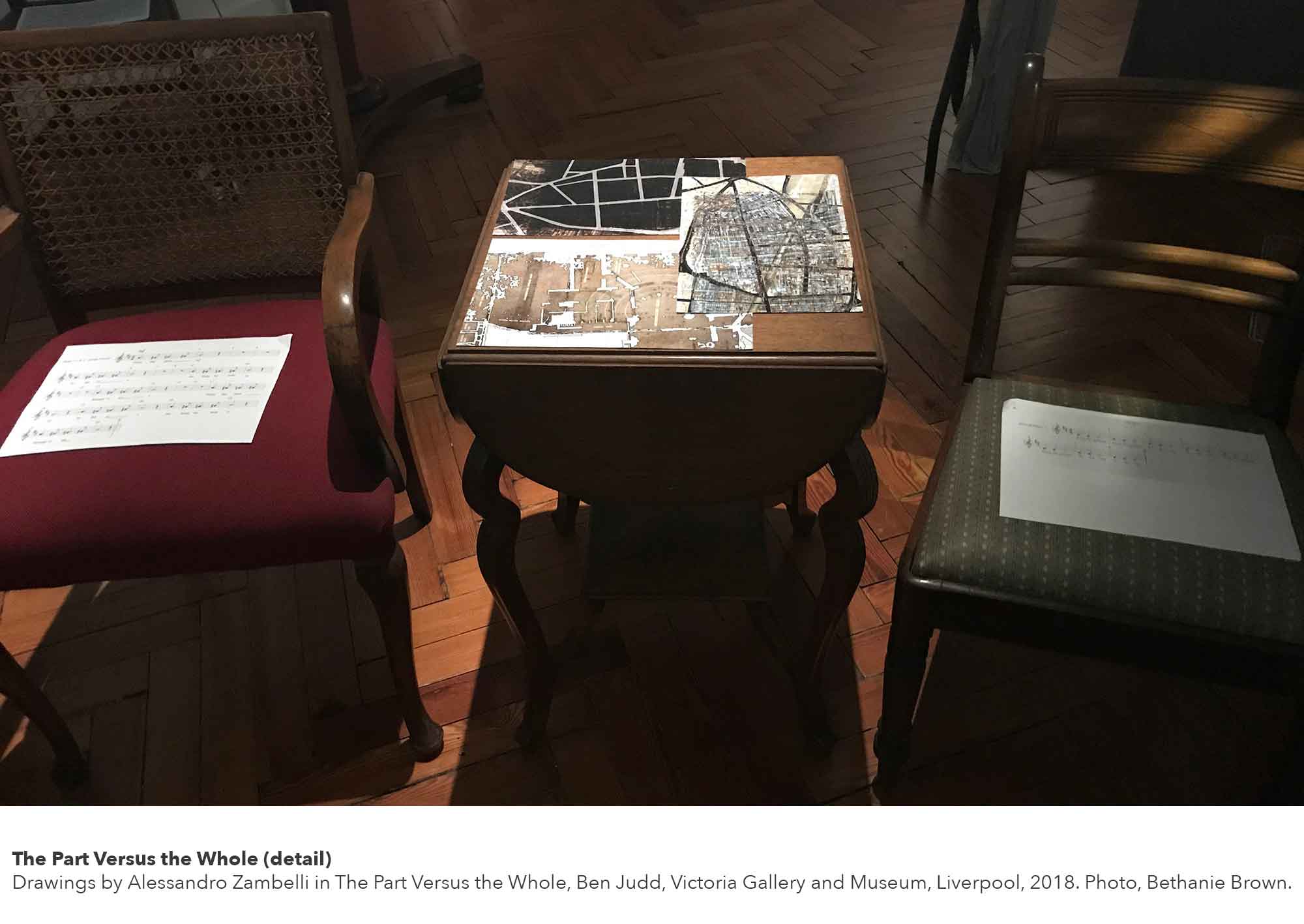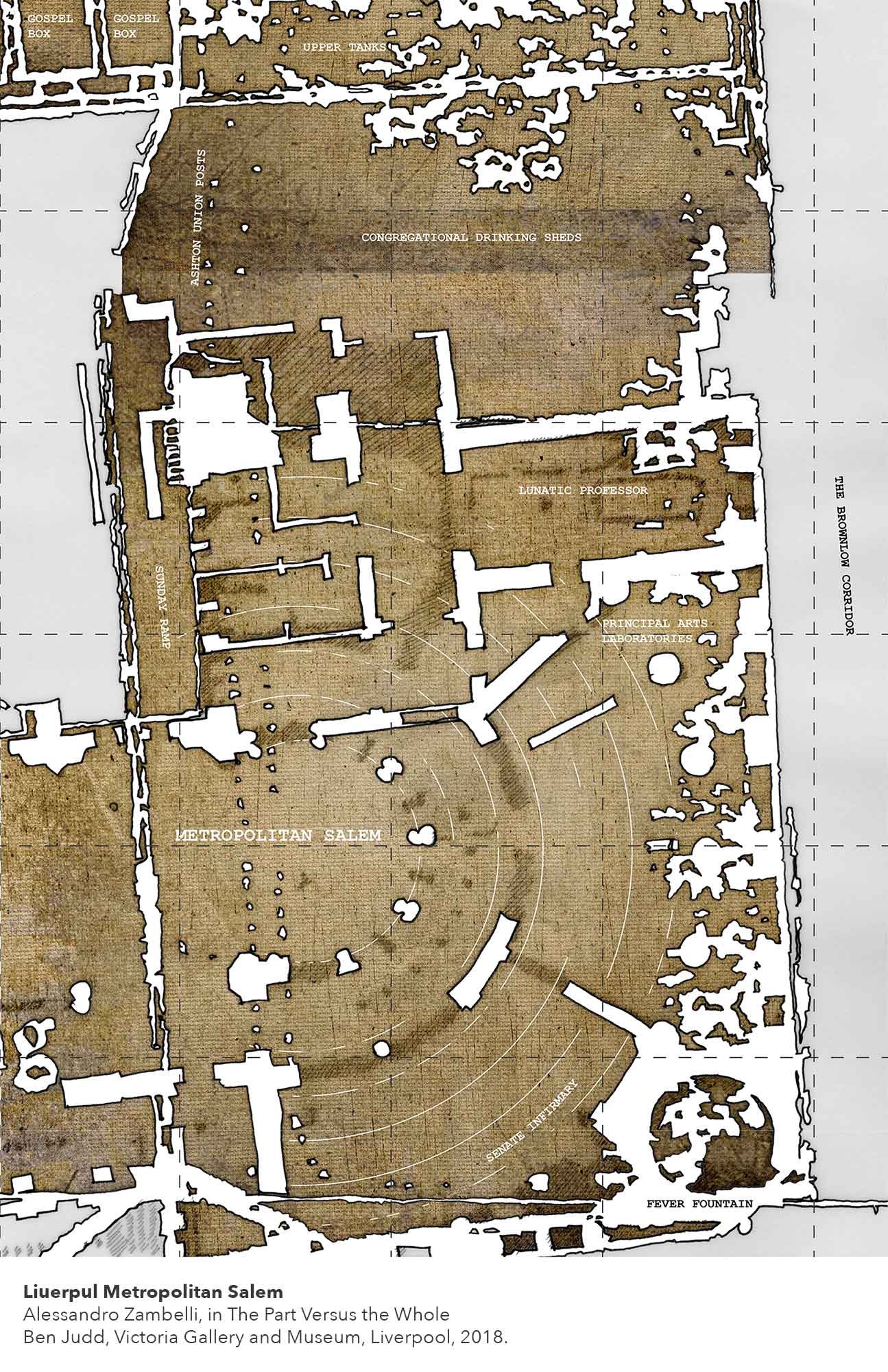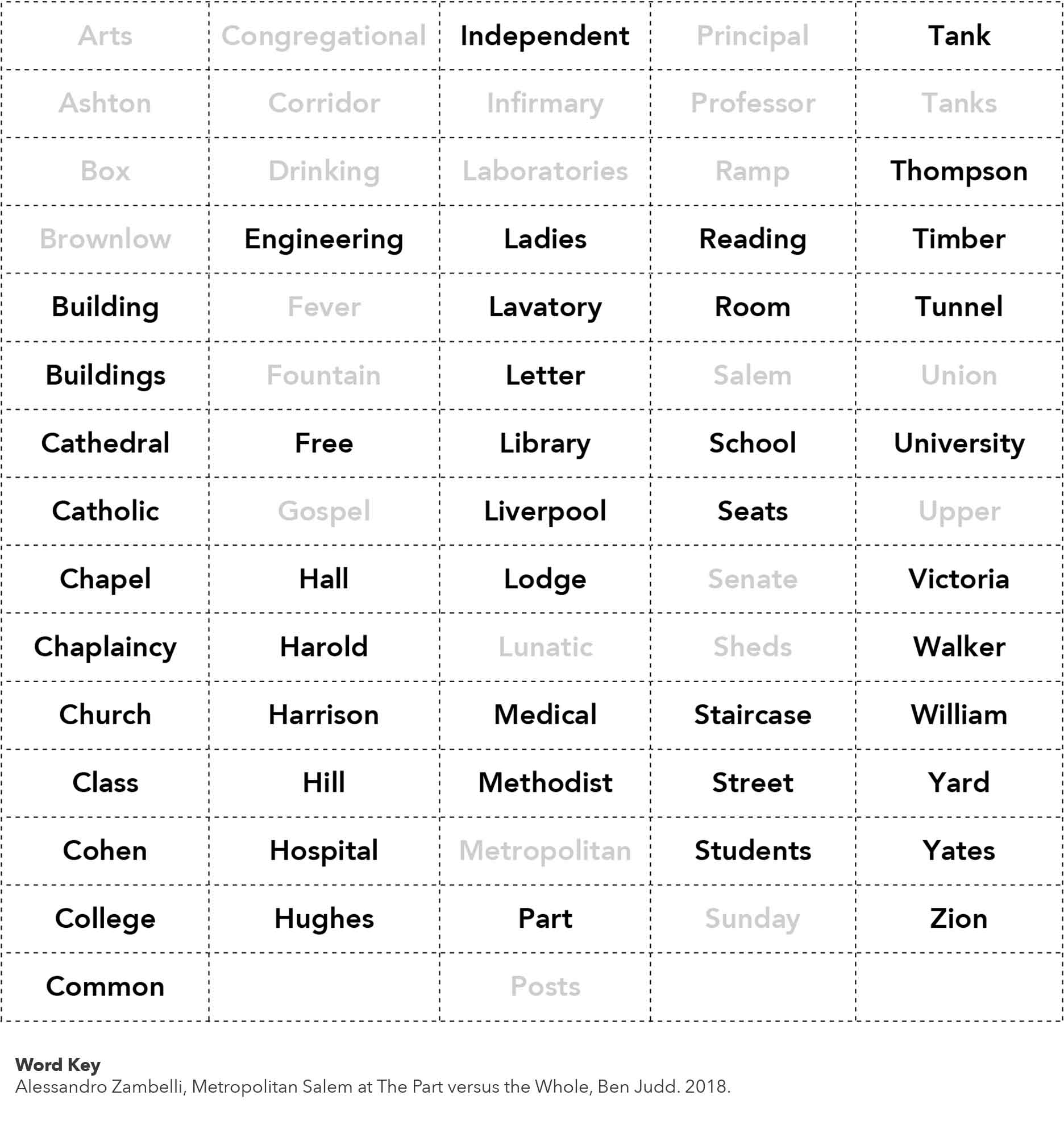



This, we believe, was what early Liuerpulians called their Metropolitan Salem, fed by the waters of the Fever Fountain and all administered by that Spring’s Lunatic Professor. Later, the people would feast in the Congregational Drinking Sheds, entertained by performances from the Gospel Boxes.
‘Combining an eclectic mix of materials from the existing Victoria Gallery and Museum’s collections and archives, including historic magic lantern slides and the archaeological photography of John Garstang, with new objects, performance and film, The Part Versus the Whole by Ben Judd is a commission for the VG&M as part of their New Perspectives 10th anniversary celebrations curated by Rose Lejeune.
Through The Part Versus the Whole Judd invokes a lost community with its own internal systems, beliefs and taxonomies of knowledge. The installation weaves together threads of mythology with imagined and real histories of characters and architecture from the local environment to create an immersive installation. A performance on 9th June, and an accompanying film, imagine this community existing within the Victoria Building.
The Part Versus the Whole is an invitation to viewers to experience a series of alternative readings of the Victoria Building’s, and Liverpool’s, history, to reimagine what might have been and to bring its possible futures to life.’
(Rose Lejeune, “New Perspectives: The Part Versus the Whole,” Victoria Gallery and Museum [online] 2018)
The Metropolitan Salem drawings became ‘found’ artefacts within Judd’s installation, reinforcing and developing the manufactured mythology of Liverpool (or Liuerpul, as it is here) drawing the Victoria Building, the site of the exhibition, into that mythology.
Alessandro Zambelli is an architect and, at the University of Brighton and Kingston University, a lecturer and researcher in architecture. He publishes and participates in the developing field of architectural/archaeological/anthropological interdisciplinarity, especially as this relates to design and drawing. With a team from Newcastle University Alessandro is a Co-Investigator on the 3-year AHRC-funded project, Wastes and Strays: The Past, Present and Future of English Urban Commons.
In 2000 Alessandro co-founded Bates Zambelli Architects which he ran until 2013.
Alessandro’s PhD was completed in 2016 through the Bartlett’s PhD by Architectural Design programme. Titled Scandalous Artefacts: visual and analogical practice between architecture and archaeology, it was supervised across the departments of architecture by Professor Jane Rendell and anthropology by Professor Victor Buchli. It will be published in 2019 by AADR Spurbuch as Scandalous Space: between architecture and archaeology.
My work is always navigating between things; in between the disciplines of architecture and archaeology and anthropology and the undisciplined, between the representational strata within archaeology itself and here, in Metropolitan Salem, through disciplinary and cartographic layering. Here critical spatial practice provides a set of tools for making work within the ‘spaces of writing itself’ (Rendell 2011:162) between the strata of the ‘visual and the verbal’ (Cheatle and Mejía Moreno 2015); providing a palimpsestuous (Dillon 2007) space between.
John Outram, ‘London as a Mythological Landscape’. Lecture, Public Lecture series from the Architectural Association, London, August 8, 1991. (available: https://www.aaschool.ac.uk/VIDEO/lecture.php?ID=754 )
Barbara Maria Stafford, Visual Analogy: Consciousness as the Art of Connecting (Cambridge, Mass. ; London: MIT Press, 1999).
Mark Dion, Archaeology (London: Black Dog, 1999).






































































